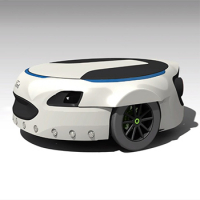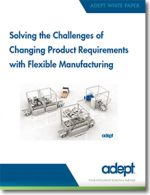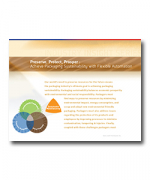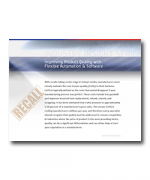Industrial Robots with Image Processing in the Photovoltaic Industry
The use of robotics in the solar industry is becoming increasingly important as manufacturerers strive to lower their costs by creating solutions for the efficient production of solar cells and modules.
As in many other sectors, the trend towards automation in the photovoltaic industry is inexorable.
The only way for the industry to be successful along a wide front is by permanently lowering its production costs.
The photovoltaic industry already has a potential that not only warrants but encourages the use of automation technology.
Using industrial robots brings shorter processing times, lower wage costs, less fracture and therefore higher cost effectiveness.
In recent years most manufacturers who have invested in this technology have done so with great success.
But many of the robotics systems still in use today lack the most important of the five human senses and work ‘blind.’
The number of tasks that a ‘blind’ robot is precluded from performing is obvious.
A 'seeing' robot can flexibly pick up, recognize and measure wafers, solar cells and even whole modules and then place the gripped objects with great precision and speed.
If a company decides that it wants to use robotics across the board, it will need to set standards within the framework of a management decision.
Some of the important questions that the robotics suppliers of the future will have to consider in their decisions are:
- Does the manufacturer have different types of kinematics (parallel kinematics, SCARA robots, 6-axis, linear axes) to meet all future requirements?
- Does the manufacturer offer effective support with programming its systems?
- Does the manufacturer also supply a powerful image processing system that has been developed for use with its robots and is this easily configured?
- How quickly can I get hold of spare parts?
- Does the manufacturer offer special training for programmers and operators?
- Is the documentation available in different languages?
What’s Related




Favorites





